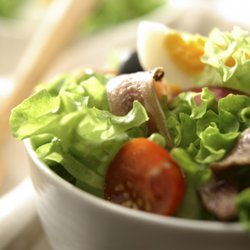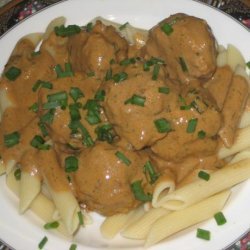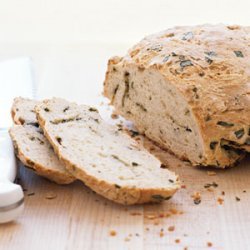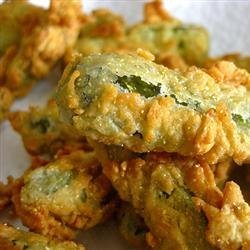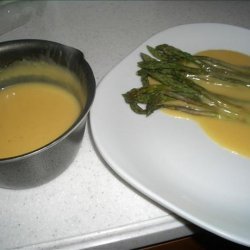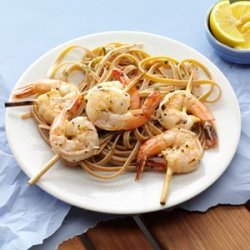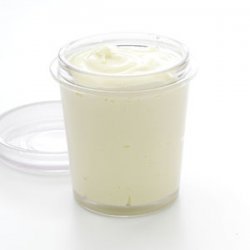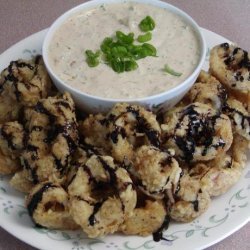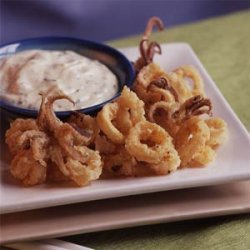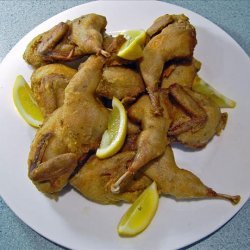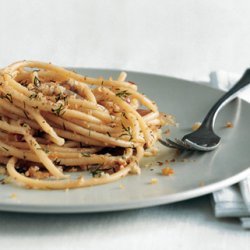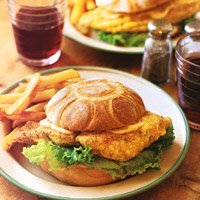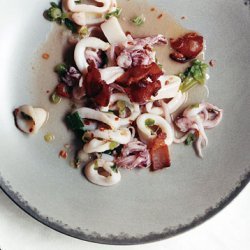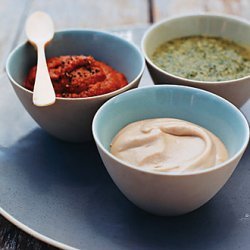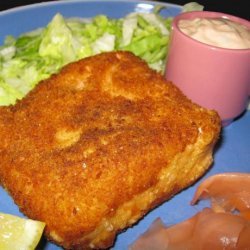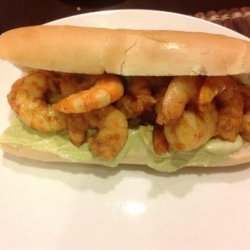Directions:
- In a food processor, combine the egg, anchovies, lemon juice, parsley, and cayenne. Blend until smooth. With the motor running, slowly add the oil to make a mayonnaise. Transfer the sauce to a bowl and refrigerate, covered tightly, for up to 2 days, until ready to serve.
- Cut the calamari into 1/4-inch rings. If the tentacles are large, halve or quarter them lengthwise. Refrigerate until ready to use.
- Pour the oil into a heavy-bottomed, straight-sided 3-quart saucepan, about 8 inches in diameter. To prevent the oil from bubbling over when frying the calamari, the pan should be no more than 1/3 full. Heat the oil to 360 degrees F on a deep fat thermometer. (to check the temperature without a thermometer , drop a small piece of bread the size of a crouton into the oil. It should float to the surface immediately and brown lightly in about 45 seconds.)
- Combine the flour and graham cracker crumbs in a bowl. Divide the calamari into 2 or 3 batches for easier frying. Toss each batch in the flour mixture to coat evenly. Shake the calamari in a mesh strainer to shed excess coating. Using tongs or a slotted spoon, gently lower each batch of calamari into the hot oil and fry until golden brown, about 2 minutes. Remove with slotted spoon and drain on paper towels. Sprinkle with salt. The cooked calamari can be kept warm in a low oven while you continue. Check your oil temperature (360 degrees F) and repeat with the remaining calamari. Serve hot with the chilled anchovy mayonnaise.
- Professional Recipe: This recipe was provided by a chef, restaurant or culinary professional and makes a large quantity. The Food Network Kitchens chefs have not tested this recipe in the proportions indicated and therefore cannot make any representation as to the results. Contains Raw Eggs: The Food Network Kitchen suggest caution in consuming raw and lightly cooked eggs due to the slight risk of salmonella or other food-borne illness. To reduce this risk, we recommend you use only fresh, properly refrigerated, clean grade A or AA eggs with intact shells, and avoid contact between the yolks or whites and the shell. For recipes that call for eggs that are raw or undercooked when the dish is served, use shell eggs that have been treated to destroy salmonella, by pasteurization or another approved method.
Nutrition Facts
| Amount Per 1 Serving | |||
| Calories | 2787.03 Kcal (11669 kJ) | ||
| Calories from fat | 2465.93 Kcal | ||
| % Daily Value* | |||
| Total Fat | 273.99g | 422% | |
|---|---|---|---|
| Cholesterol | 304.11mg | 101% | |
| Sodium | 842.42mg | 35% | |
| Potassium | 66.27mg | 1% | |
| Total Carbs | 62.51g | 21% | |
| Sugars | 10.91g | 44% | |
| Dietary Fiber | 2.8g | 11% | |
| Protein | 24.78g | 50% | |
| Vitamin C | 4.4mg | 7% | |
| Iron | 2.8mg | 16% | |
| Calcium | 57mg | 6% | |
| Amount Per 100 g | |||
| Calories | 568.11 Kcal (2379 kJ) | ||
| Calories from fat | 502.66 Kcal | ||
| % Daily Value* | |||
| Total Fat | 55.85g | 422% | |
|---|---|---|---|
| Cholesterol | 61.99mg | 101% | |
| Sodium | 171.72mg | 35% | |
| Potassium | 13.51mg | 1% | |
| Total Carbs | 12.74g | 21% | |
| Sugars | 2.22g | 44% | |
| Dietary Fiber | 0.57g | 11% | |
| Protein | 5.05g | 50% | |
| Vitamin C | 0.9mg | 7% | |
| Iron | 0.6mg | 16% | |
| Calcium | 11.6mg | 6% | |
* Percent Daily Values are based on a 2000 calorie diet. Your daily values may be higher or lower depending on your calorie needs.
Find out how many calories should you eat.
Get Your Recipe of Health!
Follow RecipeOfHealth on Facebook!


